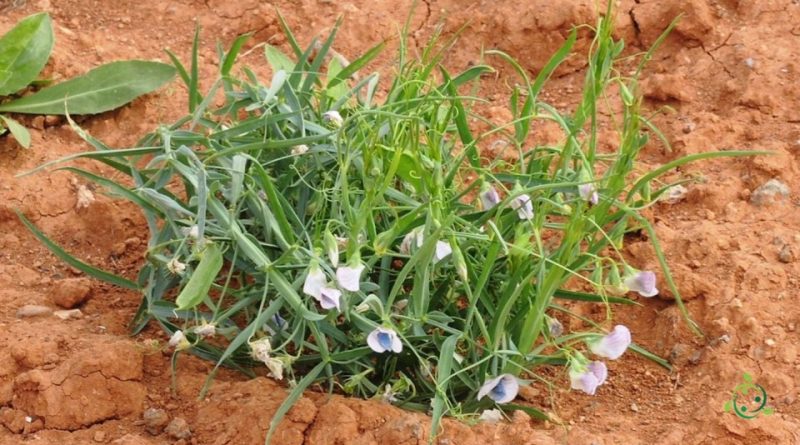Nutritional value of grass pea
Nutritional value of grass pea
The grass pea (Lathyrus sativus L., 1753) is a legume of the Fabaceae family widely cultivated for human consumption in Asia, East Africa and to a limited extent also in Europe and other areas.
This legume is grown mainly in areas prone to drought and famine.
Consumption in Italy is limited to some areas of central and southern Italy and is, unfortunately, in constant decline.
Characteristics –
The grass pea is an annual herbaceous plant, glabrous, branched, with a semi-prostrate habit, with glabrous, glaucous, characteristically winged stems; the leaves are alternate, made up of a winged petiole bearing a pair of elliptical, oblong leaflets and a very long simple or branched cirrus; the flowers are single and after fertilization, which is autogamy, they form a compressed pod containing from 2 to 5 seeds; the seeds are flattened, rather angular, white or marbled brown in colour, 4-6 mm in diameter and approximately 270 mg in weight.
Nutritional sheet –
The grass pea is a leguminous plant grown mainly for its edible seeds. The seeds are rich in proteins and carbohydrates and have an interesting nutritional content. However, it is important to note that grass pea contains a toxin called β-N-Oxalyl-L-α, β-diaminopropionic acid (β-ODAP), which when consumed in large quantities can cause a disease known as lathyrism.
This toxin can cause nerve damage and cause paralysis. Therefore, its consumption must be moderate.
Below is a rough estimate of the nutritional composition per 100 grams of cooked grass pea seeds:
– Calories: approximately 106 kcal
– Protein: approximately 7.5 grams
– Fat: approximately 0.5 grams
– Carbohydrates: approximately 20 grams
– Fibers: approximately 5.4 grams
– Calcium: approximately 50 milligrams
– Iron: approximately 1.5 milligrams
– Potassium: approximately 268 milligrams
– Vitamin C: approximately 3 milligrams
These values may vary slightly depending on the source and cooking method. It is important to consume grass pea seeds in moderation and consult a doctor if you have concerns about their consumption due to the potential toxicity of β-ODAP.
Furthermore, research reveals that the concentration of ODAP in plants increases under extreme conditions (e.g. drought), exacerbating the problem. Cultivation techniques that produce L. sativus plants with lower or no ODAP concentrations are underway.
Property –
Grass pea is a rich source of essential nutrients. Its seeds contain proteins, complex carbohydrates, fibre, vitamins (such as vitamin C, vitamin K, B vitamins) and minerals (such as iron, calcium, potassium and magnesium).
Peas are rich in fiber, which is important for digestive health. Fiber can also help regulate blood sugar levels and maintain satiety, contributing to weight control.
They also contain antioxidants like vitamin C and vitamin E, which help fight oxidative stress in the body and may reduce the risk of chronic diseases like heart disease and cancer.
They have a low glycemic index, which means they don’t cause sudden spikes in blood sugar. This makes them suitable for people who need to control blood sugar levels, such as diabetics.
They are a good source of plant-based protein, making them a nutritious option for vegetarians and vegans.
Thanks to their fiber and protein content, grass peas can help reduce hunger and promote the feeling of satiety, thus helping with weight control.
Regular consumption of grass peas can help maintain heart health thanks to their content of fibre, potassium and other nutrients that support heart function and cholesterol reduction, taking care not to overdo it due to the potential toxicity of β-ODAP .
Peas can be eaten fresh, frozen or dried and are a versatile ingredient in cooking, used in a wide range of dishes such as soups, salads, stews, side dishes and main courses.
It is important to underline again the need for moderation of its use due to the presence of β-ODAP, which can be toxic if consumed in large quantities. However, when consumed in moderation, it is generally safe and offers numerous health benefits.

